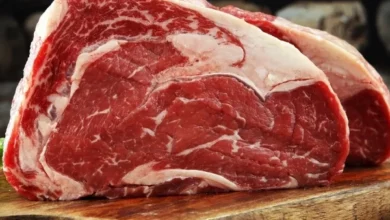
Is Chicken Healthier Than Beef or Pork? A Detailed Comparison
Nutritional Breakdown: Chicken, Beef, and Pork
Chicken: A Lean and Healthy Protein Option
Chicken, particularly when skinless, is often considered the healthiest meat option due to its low fat content. A 3-ounce serving of skinless chicken breast contains approximately 26 grams of protein and only 3 grams of fat, making it an excellent choice for anyone looking to maintain or build muscle mass without consuming excessive calories. Additionally, chicken is rich in essential nutrients like vitamin B6, niacin, and phosphorus, all of which contribute to overall health.
For those concerned with heart health, chicken stands out as a favorable choice. Since it’s low in saturated fat, it helps maintain healthy cholesterol levels, which is crucial for preventing cardiovascular diseases.
Beef: High in Protein but Also Higher in Fat
Beef is another great source of protein, particularly in lean cuts such as sirloin, tenderloin, and flank steak. A 3-ounce serving of lean beef typically provides around 22 grams of protein and 8 grams of fat. While beef is nutrient-rich, providing significant amounts of vitamin B12, zinc, and iron, it can also be higher in saturated fat, especially in fattier cuts.
The downside of beef lies in its fat content. While lean beef is healthier than fattier cuts, the higher levels of saturated fat can contribute to an increased risk of heart disease if consumed excessively. Therefore, choosing leaner cuts is essential for those who want to enjoy beef while maintaining a healthy diet.
Pork: Protein-Packed but with More Fat
Pork offers a similar protein content to beef, with a 3-ounce serving providing around 22 grams of protein. However, pork can also have a higher fat content, with about 9 grams of fat per serving, depending on the cut. Pork is an excellent source of vitamins B1, B6, and niacin, which help with energy metabolism and nerve function.
Just like beef, pork can be higher in saturated fat, especially when choosing fattier cuts. Leaner options, such as pork tenderloin, offer a healthier choice, but the general consensus is that pork is often higher in fat compared to chicken, which can be a concern for individuals watching their fat intake.
Fat Content and Health Considerations
One of the most significant differences between chicken, beef, and pork is their fat content. Chicken, particularly skinless chicken breast, is known for being the lowest in fat, especially saturated fat. This makes it an ideal option for individuals aiming for a heart-healthy diet.
- Chicken: Skinless chicken breast is low in both total fat and saturated fat, making it a great option for reducing calorie intake while still providing adequate protein.
- Beef: Lean cuts of beef can provide a good protein source, but they are higher in fat compared to chicken. Higher-fat cuts should be eaten in moderation, as they can increase cholesterol levels and the risk of heart disease.
- Pork: Pork tends to be higher in fat than chicken, but lean cuts like pork tenderloin can still be a healthy choice. As with beef, consumption of fattier cuts should be limited.
Health Benefits: Why Chicken is Often Considered the Healthiest Option
When comparing these three meats, chicken stands out due to its lower fat content, particularly when it comes to skinless chicken breast. Here’s why it’s often regarded as the healthiest choice:
- Lower in Saturated Fat: Chicken is a lean protein source, with very little saturated fat. This is especially beneficial for individuals looking to maintain healthy cholesterol levels and prevent heart disease.
- High Protein, Low Calories: Chicken offers a high amount of protein with relatively fewer calories, making it a great option for those looking to lose weight or maintain muscle mass.
- Nutrient-Dense: In addition to protein, chicken provides important vitamins and minerals like vitamin B6, niacin, and phosphorus, all of which contribute to overall health and well-being.
The Case for Beef and Pork
Although chicken is often the healthiest choice for those looking to reduce fat intake, beef and pork offer certain nutritional advantages:
- Beef: Beef is a rich source of iron, zinc, and vitamin B12, which are vital for red blood cell production, immune function, and overall health. If you’re looking to boost iron intake, lean beef is an excellent choice.
- Pork: Pork is high in thiamine, which is important for energy metabolism, and it also provides a good amount of vitamin B6 and niacin. For those who want to increase their intake of certain vitamins, pork can be a beneficial addition to the diet, especially when lean cuts are chosen.
Conclusion: Which Meat is Healthiest?

While each of the three meats—chicken, beef, and pork—has its benefits, chicken is often the healthier choice due to its low fat and high protein content. Skinless chicken, especially chicken breast, is a heart-healthy option that provides essential nutrients without excessive calories or saturated fat.
Beef and pork can also be part of a balanced diet when consumed in moderation, focusing on leaner cuts to avoid excess fat. Ultimately, the best approach to healthy eating is variety. Incorporating a range of protein sources, including chicken, beef, and pork, can help ensure that you get all the necessary nutrients while maintaining a healthy diet.





